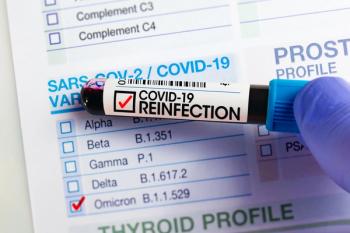Abstract
Introduction
Incidence of subcutaneous daratumumab and hyaluronidase-fihj (Darzalex Faspro; Janssen Biotech, Inc) administration–related reactions have been reported as 3 times less than intravenous daratumumab (Darzalex; Janssen Biotech, Inc). Although observation after subcutaneous daratumumab administration is not indicated, our institution’s administration policy included a 3-hour observation after the first injection and a 1-hour observation after subsequent injections; this policy was based on the median time to administration-related reactions reported in clinical trials and ultimately led to increased chair time vs rapid-infusion intravenous daratumumab. This study describes a pharmacy department–driven initiative to review the incidence of administration-related reactions with subcutaneous daratumumab at our center to determine whether observation time on subsequent injections could be reduced or eliminated.
Methods
This was a single-center retrospective study of patients who received subcutaneous daratumumab over a 6-month period. Patients were included if they received at least 1 dose of subcutaneous daratumumab between July 1, 2020, and December 31, 2020. The primary outcome was to describe the incidence of administration-related reactions in these patients. Secondary outcomes included assessment of the institution’s compliance with documentation of injection tolerance and with describing the use of premedications administered prior to subcutaneous daratumumab.
Results
A total of 33 patients received subcutaneous daratumumab between July 1, 2020, and December 31, 2020. There were no documented administration-related reactions for the first, second, or third doses in any patients.
Conclusion
This review illustrates the low incidence of administration-related reactions with subcutaneous daratumumab because there were no reported reactions for the first 3 injections in any patients. As a result of this review, the institution’s observation policy for subcutaneous daratumumab was amended to eliminate the observation period on subsequent doses if the first injection is tolerated.
Introduction
Subcutaneous (SC) daratumumab and hyaluronidase-fihj (Darzalex Faspro; Janssen Biotech, Inc) was approved for use in multiple myeloma on May 10, 2020.1 Because it is a subcutaneous product injected over 3 to 5 minutes, the perception was that it would lead to reduced chair time, cost savings, and increased patient satisfaction.1 Its intravenous (IV) counterpart, daratumumab (Darzalex; Janssen Biotech, Inc), requires slow titration on initial doses that may last up to 7 hours.2 On subsequent doses, the infusion time may last approximately 4.5 hours.2
It is possible to proceed to rapid-infusion IV daratumumab over 90 minutes if tolerated.2 The IV formulation of daratumumab is highly associated with administration-related (ARRs), with rates of infusion reactions reported as 28% to 50% in various landmark clinical trials.3-9 In the phase 3, noninferiority COLUMBA (NCT03277105) trial, the overall incidence of systemic ARRs with SC daratumumab and hyaluronidase-fihj was approximately 3 times less compared with IV daratumumab (13% vs 34%, respectively; OR, 0.28; 95% CI, 0.18-0.44; P < .0001).10 Overall, the COLUMBA trial found that SC daratumumab and hyaluronidase-fihj was noninferior to IV daratumumab in terms of efficacy and pharmacokinetics and had an improved safety profile in multiple myeloma.10 In a pooled safety population of 898 patients, the median time to ARRs with SC daratumumab and hyaluronidase-fihj was 3.2 hours (range, 4 minutes to 3.5 days), with the incidence of such reactions reported to be 8% on the first injection, 0.3% on the second injection, and 1% on subsequent injections.1
The FDA prescribing information for SC daratumumab and hyaluronidase-fihj does not indicate that patients must be observed after injections.1 However, when SC daratumumab and hyaluronidase-fihj was first approved, our institution created an administration and observation policy stipulating that patients were to be observed for 3 hours after the first injection and for 1 hour after every subsequent injection. The 3-hour initial observation time was implemented due to the reported median time to ARRs of 3.2 hours, with an 8% incidence on the first injection.1 The 1-hour observation period was implemented as an additional safety measure to address the lower incidence of reactions on subsequent doses. Due to this practice of observation, the subcutaneous product does not reduce chair time for patients because 1 hour is required for oral premedications to take effect, followed by the subcutaneous injection that may take up to 5 minutes and then the 1-hour observation period (total time: 125 minutes). For IV daratumumab rapid infusion, 30 minutes is needed for IV premedications to take effect, followed by the 90-minute infusion only (total time: 120 minutes). With these reported data, the chair time was, in fact, slightly increased for patients receiving SC daratumumab and hyaluronidase-fihj at our institution.
Other studies have aimed to define the optimal monitoring and administration of SC daratumumab and hyaluronidase-fihj. Davis et al evaluated 66 daratumumab-naive patients who received SC daratumumab and hyaluronidase-fihj and found that 9% of patients developed ARRs, with all reactions occurring within 6 hours of the first dose.11 All reactions were grade 2 or less and were reversible with supportive care.11 Kim et al employed a 4-hour observation time in patients deemed to be high risk for systemic ARRs and found that only 4% had systemic reactions.12 All reactions were mild and occurred following the first SC daratumumab and hyaluronidase-fihj dose.12 Hamadeh and colleagues likewise monitored daratumumab-naive patients receiving SC daratumumab and hyaluronidase-fihj for 4 hours after administration, with no cases of ARRs.13
A recent study by Maples et al conducted at a single center performed a 2-step process during which the observation time after SC daratumumab and hyaluronidase-fihj was reduced from 3.5 hours to 2 hours and then after 8 weeks to 0 hours. Of the 3 patients who had an ARR, 2 patients were in the 2-hour observation group and 1 patient was in the 0-hour observation group; all ARRs were grade 1 or 2. Thus, the investigators concluded that patients may be able to safely receive SC daratumumab and hyaluronidase-fihj with no observation period.14
Anecdotally, we have not observed any ARRs with the SC formulation of daratumumab and hyaluronidase-fihj in our clinical practice. Because clinical trials and other published studies report a significantly reduced risk of ARRs with SC daratumumab and hyaluronidase-fihj, the purpose of this retrospective chart review was to gather information regarding the incidence of ARRs with SC daratumumab and hyaluronidase-fihj at our community cancer center to determine whether the observation time on subsequent injections could be reduced or eliminated.
Methods
This was an institutional review board–exempt, single-center, retrospective study—spearheaded by the pharmacy department—of patients who received SC daratumumab and hyaluronidase-fihj over a 6-month period at a community cancer center. All patients were included who received at least 1 dose of SC daratumumab and hyaluronidase-fihj between July 1, 2020, and December 31, 2020. Patients were excluded if they were receiving SC daratumumab and hyaluronidase-fihj as part of a clinical trial. The primary outcome was to describe the incidence of ARRs in patients receiving SC daratumumab and hyaluronidase-fihj. Secondary outcomes included assessment of the institution’s compliance with documentation of ARRs and with describing the use of premedications administered prior to SC daratumumab.
At the time of data collection, the institutional practice was to observe patients for 3 hours after the initial injection and for 1 hour after each subsequent injection. Per the prescribing criteria for SC daratumumab and hyaluronidase-fihj, premedication with a corticosteroid, acetaminophen, and histamine antagonist is recommended.1 For the purposes of this study, proper premedications prior to SC daratumumab and hyaluronidase-fihj were defined as acetaminophen 650 mg to 1000 mg, dexamethasone 20 mg, and diphenhydramine 25 or 50 mg given intravenously or orally 30 to 60 minutes prior to injection in accordance with prescribing criteria.1 At our institution, montelukast sodium (Singulair; Merck Sharp & Dohme Corp) 10 mg is also given prior to at least cycle 1 day 1 of SC daratumumab and hyaluronidase-fihj injections. Although this is not part of the manufacturer’s prescribing criteria, it is in accordance with the protocol utilized in the COLUMBA trial, during which predose administration of a leukotriene inhibitor was optionally administered on day 1 cycle 1 of treatment with SC daratumumab and hyaluronidase-fihj.10
At our institution, montelukast is an automatically included order in daratumumab-containing electronic regimens for all cycles as an added safety precaution, but it may be removed at the discretion of the treating physician after cycle 1 day 1. For this study, acetaminophen, dexamethasone, and diphenhydramine were considered required medications and montelukast was considered optional. Any omission or dose reduction of one of the required premedications was considered to be a deviation and reported as such in the results.
Eligible patients’ charts were reviewed for documentation of an ARR in the physician’s note, nursing note summary, or as evidenced by any additional documentation surrounding the dates of administration. It should be noted that per our institutional practice, a nurse calls each patient the day after daratumumab administration to assess for delayed reactions. Lack of documentation of tolerance and/or reactivity was assumed to indicate that the patient tolerated without issues and was categorized as such during data collection. Only the first 3 injections were reviewed because, as noted in the COLUMBA trial, no patients had an ARR beyond the fourth injection.10 Data were analyzed using descriptive statistics.
Results
The baseline characteristics of the 33 patients are illustrated in Table 1. There were no documented reactions for the first, second, or third dose of SC daratumumab and hyaluronidase-fihj in any patients. Four patients experienced reactions deemed unrelated to SC daratumumab and hyaluronidase-fihj injection by the attending physician; these reactions are detailed in Table 2. Further injections were tolerated by all 4 of these patients.
Premedications were given appropriately in 30 patients (90.9%). One patient had dexamethasone omitted, 1 patient received a decreased dexamethasone dose, and 1 patient received ibuprofen instead of acetaminophen and a decreased dose of dexamethasone. Of note, none of the patients with premedication modifications experienced a hypersensitivity reaction.
In our study, 18 patients (54.5%) who received SC daratumumab and hyaluronidase-fihj had previously received IV daratumumab. One of these stopped IV daratumumab due to experiencing a severe hypersensitivity reaction but was able to tolerate SC daratumumab and hyaluronidase-fihj without reported reactions in this study.
Of the 33 patients who received SC daratumumab and hyaluronidase-fihj, 24 patients (72.7%) had at least 1 specific documentation of tolerance on any of the 3 doses, whereas only 2 patients (6.1%) had documentation of tolerance after all 3 doses. It was assumed that the lack of documentation of both tolerance and/or reactivity indicated that the patient did not have an ARR.
Discussion
Although not indicated, our institution’s SC daratumumab and hyaluronidase-fihj administration policy included an observational period based on time to ARR seen in clinical trials, a practice that inadvertently increased chair time due to a 3-hour observation period after the first injection and 1-hour observation on all subsequent injections. This review illustrates the low incidence of ARRs with SC daratumumab and hyaluronidase-fihj at our institution, as there were no reported reactions on the first, second, or third injections in the 33 patients treated during the 6-month period.
As a result of this pharmacy department–driven review, our center amended the observation policy for SC daratumumab and hyaluronidase-fihj in March 2021 to eliminate the 1-hour observational period on subsequent doses if the first injection is tolerated. However, if a reaction occurs during the first dose’s 3-hour observation period, the patient must be monitored for 1 hour post injection on subsequent doses until no reaction occurs, after which the observation period can be eliminated (Figure).
To address the inconsistency with documentation of tolerance, a new and more automated process was created for documenting injection tolerance in the electronic health record. Currently, a table is located within the patient’s chart with sections to record if the patient received a monoclonal antibody such as daratumumab and a section to record the patient’s tolerance of treatment and whether any complications occurred during the injection or observation period. Overall, the institutional policy change was well received by key stakeholders.
The policy change was initially presented by the pharmacy department at the hematology subcommittee physician meeting, where it received initial approval by the hematology physicians. It was subsequently presented to the oncology pharmacy and therapeutics committee and received approval by physician and nursing leadership. In the implementation phase, education was provided to nursing staff on the new protocol before an official go-live date was set. The policy also was made available on the institution’s intranet. Patients were not officially surveyed for their feedback as part of this study, but they anecdotally expressed their appreciation for the reduced observation time.
Limitations
Limitations of this study include its retrospective, single-center design and the manual chart review for data collection. Additionally, this study had a small sample size due to the timing of data collection being relatively close to the FDA approval of SC daratumumab and hyaluronidase-fihj for multiple myeloma; at the time, not all insurance daratumumab and hyaluronidase-fihj, leading to denials in coverage. It is likewise a limitation of the study that the lack of documentation of tolerance and/or reactivity was assumed to indicate that the patient tolerated without issues. Furthermore, only information surrounding the first 3 SC daratumumab and hyaluronidase-fihj injections was collected. Thus, any reactions occurring after the third injection were not captured. Moreover, because this study was performed retrospectively, patient satisfaction feedback was not able to be collected; however, it has been described in other studies.14
About the Authors
Monica Tadros, PharmD, BCPS, BCOP, is a malignant hematology/bone marrow transplant clinical pharmacy specialist at Miami Cancer Institute–Baptist Health South Florida.
Tiba Al Sagheer, PharmD, BCOP, BCACP, is an outpatient hematopoietic stem cell transplant/bone marrow transplant/malignant hematology clinical pharmacy specialist at Miami Cancer Institute–Baptist Health South Florida.
Morgan Alvah, PharmD, is a postgraduate year 1 resident at South Florida Baptist Hospital–BayCare in Plant City, Florida. At the time of writing, she was a 4th-year pharmacy student at Palm Beach Atlantic University Lloyd L. Gregory School of Pharmacy in West Palm Beach, Florida.
Conclusion
As noted in our study results, patients with modified premedications including corticosteroid omission and/or dose decrease did not experience an ARR. Eliminating premedications prior to SC daratumumab and hyaluronidase-fihj injection has the potential to save an additional 30 minutes to 1 hour of chair time and has been investigated in previous studies. In the study by Maples et al, acetaminophen and diphenhydramine premedications were omitted in cycle 3 and beyond for patients without previous reaction.14 Furthermore, in a study by Yudchyts et al, acetaminophen and diphenhydramine premedications were safely omitted in cycle 4 and beyond for patients without previous reaction.15 In addition, 18 patients stopped corticosteroids and were able to tolerate treatment without any ARRs.15 Thus, it may be of value to perform a follow-up prospective study at our institution to determine whether premedications may be eliminated with SC daratumumab and hyaluronidase-fihj due to the low risk of reaction.
Additionally, 1 patient included in our review had a previous reaction to IV daratumumab but received SC daratumumab and hyaluronidase-fihj without complications. This is interesting to note because previous studies have reported an overall increase in risk of reactivity to SC daratumumab if prior IV daratumumab intolerance has been noted.16
Reducing observation time has several implications in clinical practice, including a reduction in chair time (increasing chair availability and access to care), optimization of health care resources (ie, staffing), and cost savings. Overall, our analysis demonstrated that SC daratumumab and hyaluronidase-fihj was well tolerated by patients and that eliminating observation time on subsequent injections is a safe practice that may result in reduced chair time and cost savings for the institution.
References
Facon T, Kumar S, Plesner T, et al; MAIA Trial Investigators. Daratumumab plus lenalidomide and dexamethasone for untreated myeloma. N Engl J Med. 2019;380(22):2104-2115. doi:10.1056/NEJMoa1817249
Mateos MV, Dimopoulos MA, Cavo M, et al; ALCYONE Trial Investigators. Daratumumab plus bortezomib, melphalan, and prednisone for untreated myeloma. N Engl J Med. 2018;378(6):518-528. doi:10.1056/NEJMoa1714678
Moreau P, Attal M, Hulin C, et al. Bortezomib, thalidomide, and dexamethasone with or without daratumumab before and after autologous stem-cell transplantation for newly diagnosed multiple myeloma (CASSIOPEIA): a randomised, open-label, phase 3 study. Lancet. 2019;394(10192):29-38. doi:10.1016/S0140-6736(19)31240-1
Dimopoulos MA, Oriol A, Nahi H, et al; POLLUX Investigators. Daratumumab, lenalidomide, and dexamethasone for multiple myeloma. N Engl J Med. 2016;375(14):1319-1331. doi:10.1056/NEJMoa1607751
Palumbo A, Chanan-Khan A, Weisel K, et al; CASTOR Investigators. Daratumumab, bortezomib, and dexamethasone for multiple myeloma. N Engl J Med. 2016;375(8):754-766. doi:10.1056/NEJMoa1606038
Dimopoulos M, Quach H, Mateos MV, et al. Carfilzomib, dexamethasone, and daratumumab versus carfilzomib and dexamethasone for patients with relapsed or refractory multiple myeloma (CANDOR): results from a randomised, multicentre, open-label, phase 3 study. Lancet. 2020;396(10245):186-197. doi:10.1016/S0140-6736(20)30734-0
Chari A, Suvannasankha A, Fay JW, et al. Daratumumab plus pomalidomide and dexamethasone in relapsed and/or refractory multiple myeloma. Blood. 2017;130(8):974-981. doi:10.1182/blood-2017-05-785246
Mateos MV, Nahi H, Legiec W, et al. Subcutaneous versus intravenous daratumumab in patients with relapsed or refractory multiple myeloma (COLUMBA): a multicenter, open-label, non-inferiority, randomized, phase 3 trial. Lancet Haematol. 2020;7(5):e370-e380. doi:10.1016/S2353-3026(20)30070-3
Davis JA, Youngberg H, Gaffney K, Duco M, Hashmi H. ‘Fast but not so furious’: short observation time after subcutaneous daratumumab administration is both a safe and cost-effective strategy. Clin Lymphoma Myeloma Leuk. 2022;22(8):e680-e684. doi:10.1016/j.clml.2022.03.006
Kim EB, O’Donnell E, Branagan A, et al. P-002: real-world observations and practical considerations of subcutaneous daratumumab administration in multiple myeloma. Clin Lymphoma Myeloma Leuk 2021;21(suppl 2):S40. doi:10.1016/S2152-2650(21)02136-4
Hamadeh IS, Moore DC, Martin A, et al. Transition from intravenous to subcutaneous daratumumab formulation in clinical practice. Clin Lymphoma Myeloma Leuk. 2021;21(7):470-475. doi:10.1016/j.clml.2021.02.014
Maples KT, Hall KH, Joseph NS, et al. Eliminating the monitoring period with subcutaneous daratumumab: a single-center experience. Blood Cancer J. 2023;13(1):29. doi:10.1038/s41408-023-00801-1
Yudchyts A, Lin T, Vescio R. Optimizing care: discontinuing medications prior to daratumumab and hyaluronidase-fihj subcutaneous injection (OMIT). Blood. 2020;136 (suppl 1):22-23. doi:10.1182/blood-2020-141644
Kim CK, Douglass L, Gustafson B, et al. Characteristics of daratumumab reactions in patients who transitioned from intravenous daratumumab to subcutaneous daratumumab. Blood. 2021;138(suppl 1):4744. doi:10.1182/blood-2021-154174
The authors have no disclosures.




















































































































































































































